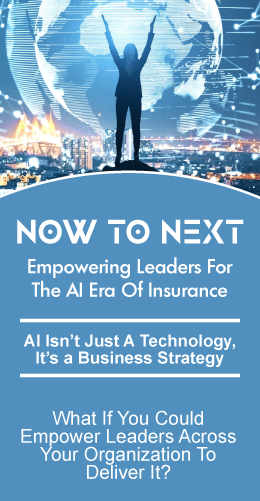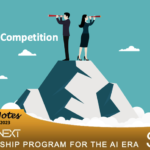Life and health Underwriting is going through another technological and customer-driven revolution. A new generation of AI, IoT, other emerging technologies, and customers is driving it. The next generation of underwriting will be more accurate, efficient, and personalized. Here’s what it takes to be part of it.
Business and Technical Drivers and Trends
The insurance industry is changing rapidly, influenced by emerging technologies, evolving customer expectations, new regulatory requirements, and increased competition from InsurTechs and big tech companies.
AI and data analytics are crucial in enabling more accurate risk assessment, pricing, and personalization, leading to better customer experiences and improved business outcomes. Wearables and connected devices provide real-time data, allowing for dynamic underwriting and personalized products.
Customer expectations are shifting and will be accelerated by Gen Z and Alpha generations, who value digital experiences, transparency, flexibility, and personalization in their insurance products. These younger generations are more environmentally and socially conscious, which affects their expectations and demands from insurance providers.
Competition in the insurance market has also intensified with the entry of big tech companies and InsurTechs, which leverage their technology expertise to offer innovative insurance products and seamless customer experiences. Many major carriers are working to secure their future with these new generations. They have also formed strategic partnerships with Big Tech companies, InsurTechs, and emerging technology vendors to stay competitive and tap into their technological capabilities.
McKinsey’s Model: Building Blocks for Underwriting Excellence
McKinsey has identified five building blocks for underwriting excellence that are essential for insurers to adapt to the rapidly changing landscape:
Advanced analytics: Harnessing the power of data-driven insights to improve risk assessment, pricing, and decision-making. This involves leveraging AI, machine learning, and predictive modeling to analyze vast amounts of structured and unstructured data from multiple sources, enabling underwriters to make more informed decisions.
Digitization: Implementing end-to-end digital solutions to streamline and automate underwriting processes, enhance customer experience, and reduce operational costs. This can include digitizing customer touchpoints, integrating data from various sources, and utilizing digital platforms to improve collaboration among underwriters, agents, and customers.
Process redesign: Reevaluating and optimizing existing underwriting processes to increase efficiency, accuracy, and responsiveness. This might involve identifying bottlenecks, eliminating manual tasks, and adopting best practices from other industries to achieve operational excellence.
Talent management: Attracting, developing, and retaining top underwriting talent with the necessary skills to succeed in a technology-driven environment. This includes fostering a culture of continuous learning and innovation, training in data analytics and digital tools, and creating cross-functional teams to promote collaboration and knowledge sharing.
Performance management: Establishing a robust system to track and measure underwriting performance, drive accountability, and promote a results-oriented culture. This can involve setting clear performance metrics, providing regular feedback, and rewarding top performers.
Examples of The New Generation Underwriting:
The following are examples of next-gen underwriting processes. These directly support the Mckinsey model.
AI-driven risk assessment: Utilizing AI algorithms, underwriters can process vast amounts of data to identify patterns and correlations, enabling more accurate risk assessments and pricing decisions. Life companies can analyze data from electronic health records, social media, etc. This will help assess an applicant’s risk profile and determine appropriate premiums. Better risk management, enhanced customer satisfaction, and reduced claims costs.
Real-time monitoring for dynamic underwriting: With continuous health and lifestyle data monitoring, your company can offer dynamic policy adjustments based on customer risk profile changes, providing more flexibility and responsiveness. For example, a health insurance provider might use data from wearable devices to track customers’ physical activity and offer premium discounts or other incentives for maintaining a healthy lifestyle. This approach rewards customers for positive behavior changes and helps insurers manage risk more effectively.
Streamlined customer onboarding: AI-driven automation can simplify the application and underwriting process, reducing the time and effort required from customers and underwriters. One example is using AI-powered chatbots to guide customers through the application process, answer questions, and collect the necessary documentation, resulting in a more efficient and user-friendly experience. Additionally, AI can be used to perform initial underwriting assessments, quickly identifying low-risk applicants and expediting the approval process for them.
Enhanced communication and collaboration: AI-powered chatbots and NLP tools can facilitate more effective communication between underwriters, agents, and customers, making the underwriting process more transparent and understandable. For instance, AI-driven platforms can help translate complex insurance terms into plain language or provide instant explanations to customers’ queries, enhancing customer engagement and satisfaction. These tools can also assist underwriters in streamlining communication with agents, helping to address inquiries and clarify information more efficiently.
Predictive analytics for claims management: Advanced analytics can identify potential claims before they occur, enabling insurers to take proactive measures to prevent or mitigate losses. For example, health insurers can analyze data on customers’ behaviors, medical history, and other factors to predict the likelihood of future health issues and provide targeted interventions or wellness programs to reduce the risk of costly claims.
Fraud detection and prevention: AI and machine learning algorithms can help insurers identify and combat fraud more effectively. By analyzing patterns in claims data, these technologies can flag suspicious activity, enabling underwriters to focus their efforts on high-risk cases and reduce losses due to fraudulent claims.
Implementing Solutions and the Importance of Design Thinking and Agile Methodologies
Organizations must adopt design thinking and agile methodologies to implement these next-generation underwriting solutions successfully.
Design thinking encourages empathy and a deep understanding of customer needs, while agile methodologies promote adaptability and continuous improvement. By combining these approaches, organizations can develop customer-centric solutions that address fundamental pain points and expectations. It also allows for the iteration and refinement of solutions based on feedback and changing market conditions, fostering a culture of innovation and collaboration within the organization.
Collaboration and partnering are crucial components of successful implementation. Bringing together teams with diverse skill sets, perspectives, and experiences can lead to more robust and creative problem-solving. Collaborative environments also encourage open communication and knowledge-sharing, which can help identify potential issues early on and develop effective solutions quickly.
Partnering with external stakeholders, such as customers, vendors, or industry experts, can also provide valuable insights into customers’ needs and pain points. Organizations can create more effective solutions that meet customer expectations and improve customer satisfaction by understanding customers’ challenges.
Next-gen networks and analytics enable organizations to process large amounts of data quickly and accurately, providing insights into customer behavior and preferences. Interoperability with digital ecosystems further enhances the customer experience, enabling customers to seamlessly interact with insurers across various channels.
Procedural AIs like Chat GPT also play a critical role in the next-gen insurance underwriting process. Chat GPT can analyze vast amounts of unstructured data, providing insights into customer behavior and preferences. It can also assist with customer interactions, providing personalized recommendations and support and reducing the burden on human agents.
Prioritize Your Implementation Plan.
The following steps can help you decide which initiatives to prioritize and how to sequence their implementation:
Assess organizational readiness: Before embarking on any transformational initiative, evaluate your organization’s readiness for change. Consider your current technological infrastructure, workforce capabilities, and overall culture. This assessment will help you identify gaps that need to be addressed before implementing new underwriting solutions.
Identify key objectives and pain points: Clearly define the key objectives you want to achieve with the next generation of underwriting, such as improved risk management, enhanced customer experience, or cost reduction. Also, identify existing pain points in your underwriting processes that must be addressed. This will help you prioritize the initiatives that align with your strategic goals and address critical challenges.
Evaluate the potential impact: Analyze the potential impact of each example on your organization’s performance, including factors like risk management, customer satisfaction, operational efficiency, and financial results. This will help you prioritize initiatives that offer the most significant benefits and align with your strategic objectives.
Assess the required investment and complexity: Consider the investment required for implementing each example, including costs related to technology, workforce training, and process redesign. Also, assess the complexity of each initiative, considering factors like integration with existing systems, organizational change management, and regulatory compliance. This will help you prioritize feasible initiatives and offer a favorable return on investment.
Develop a phased implementation plan: Based on your evaluation, create a phased implementation plan that sequences the prioritized initiatives according to their potential impact, required investment, and complexity. This will allow you to manage resources effectively, minimize disruption, and ensure a smooth transition to the next generation of underwriting.
Monitor progress and adjust: As you implement the prioritized examples, continuously monitor progress against your strategic objectives, and make adjustments as needed. This will help you stay on track, learn from any challenges, and iterate on your approach to maximize the benefits of the next generation of underwriting.
Continuous improvement: Customers, technology, and the insurance industry are continually evolving, and it’s essential to adopt a mindset of continuous improvement. Regularly evaluate the effectiveness of your underwriting solutions and processes, and be prepared to make adjustments as needed to stay ahead of the curve.
Executive Support for the Next Generation of Underwriting and AI
As an executive, it’s crucial to recognize the importance of embracing the next generation of underwriting and supporting your organization in its transition. Here are some ways you can guide and support this transformation:
Develop a clear vision and strategy: Clearly articulate the company’s vision for the future of underwriting, including the use of advanced analytics, digitization, and customer-centric solutions. Establish a strategic roadmap to guide your organization in achieving this vision.
Invest in technology and partnerships: Allocate resources to acquire or develop the necessary technology infrastructure and tools to enable the next generation of underwriting. Consider partnering with InsurTechs, big tech companies, or other external partners to access cutting-edge solutions and expertise.
Ethical considerations: As AI and machine learning algorithms become more integrated into the underwriting process, it’s crucial to consider the ethical implications of these technologies. Ensuring that algorithms are transparent, unbiased, and designed with ethical principles in mind can help avoid potential issues related to fairness and discrimination.
Data privacy and security: With the increased use of advanced analytics, AI, and real-time data monitoring, ensuring data privacy and security becomes even more critical. It is essential to help your team evaluate and comply with all relevant data protection regulations and invest in robust cybersecurity measures to safeguard customer information and maintain trust.
Foster a culture of innovation: Encourage a mindset of continuous improvement, experimentation, and learning within your organization. Support cross-functional collaboration and knowledge sharing to accelerate innovation and drive the adoption of new underwriting methods.
Upskilling and reskilling the workforce: The shift to the next generation of underwriting will require changes in the skillsets of your workforce. Invest in ongoing training and development programs to help your underwriters and other staff members acquire the necessary skills to work effectively with new technologies and processes
Implement agile methodologies: Adopt agile methods and frameworks to speed up decision-making, improve responsiveness, and manage the uncertainties inherent in digital transformation. This approach enables your organization to iterate quickly, adapt to changing customer needs, and remain competitive in the fast-paced insurance landscape.
Provide competitive examples: How leading insurers and InsurTechs leverage next-generation underwriting to differentiate themselves and gain a competitive edge. Use these examples to inspire your organization and demonstrate the potential benefits of embracing new underwriting approaches.
Why Embracing the Next Generation of Underwriting Matters Now
As customer expectations evolve and competition from InsurTechs and big tech companies intensifies, the insurance industry must adapt to remain relevant and successful. The next generation of underwriting, powered by advanced analytics, digitization, and customer-centric solutions, offers an opportunity for your company to differentiate itself, improve risk management, and enhance customer satisfaction.
The time to act is now. By supporting the transition to the next generation of underwriting, investing in technology and partnerships, fostering a culture of innovation, implementing agile methodologies, and providing stakeholders with competitive examples, you can guide your organization toward a successful future in the life and health insurance industry. Don’t wait for your competitors to dictate the pace of change – seize the opportunity and lead the way in shaping the future of insurance.
Let’s get started.
Mike Connor, CEO, SVIA
Your thoughts and comments are appreciated.It’s








